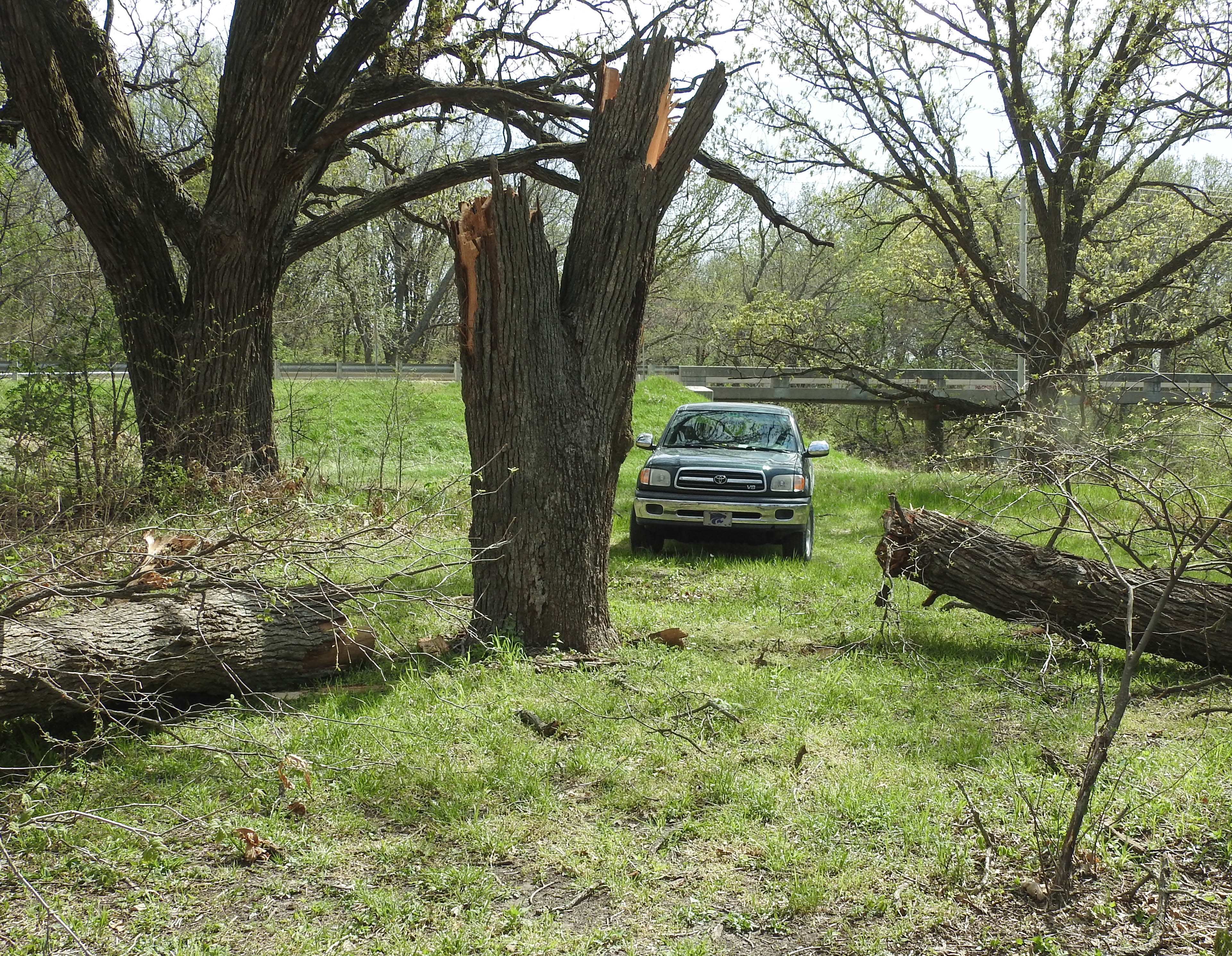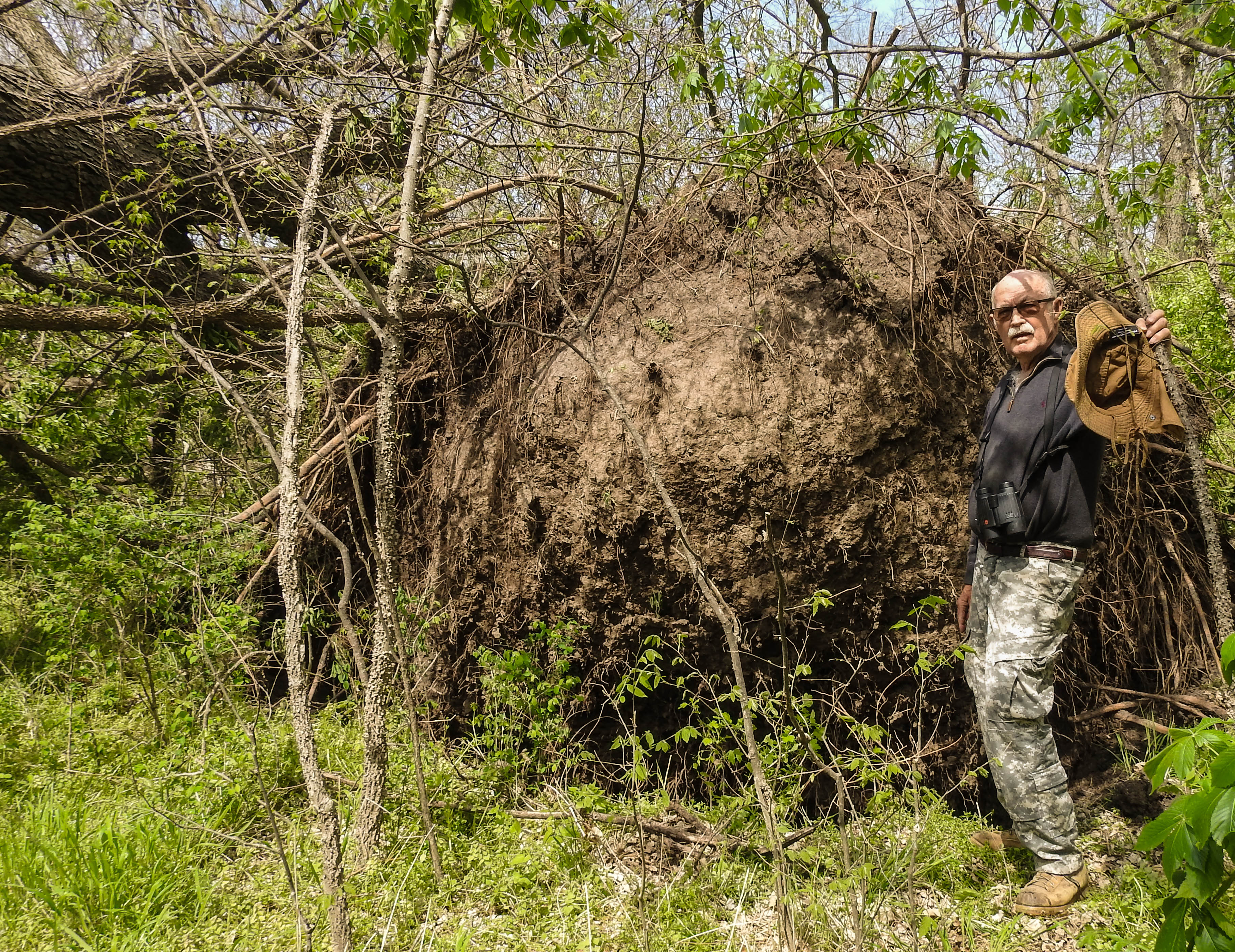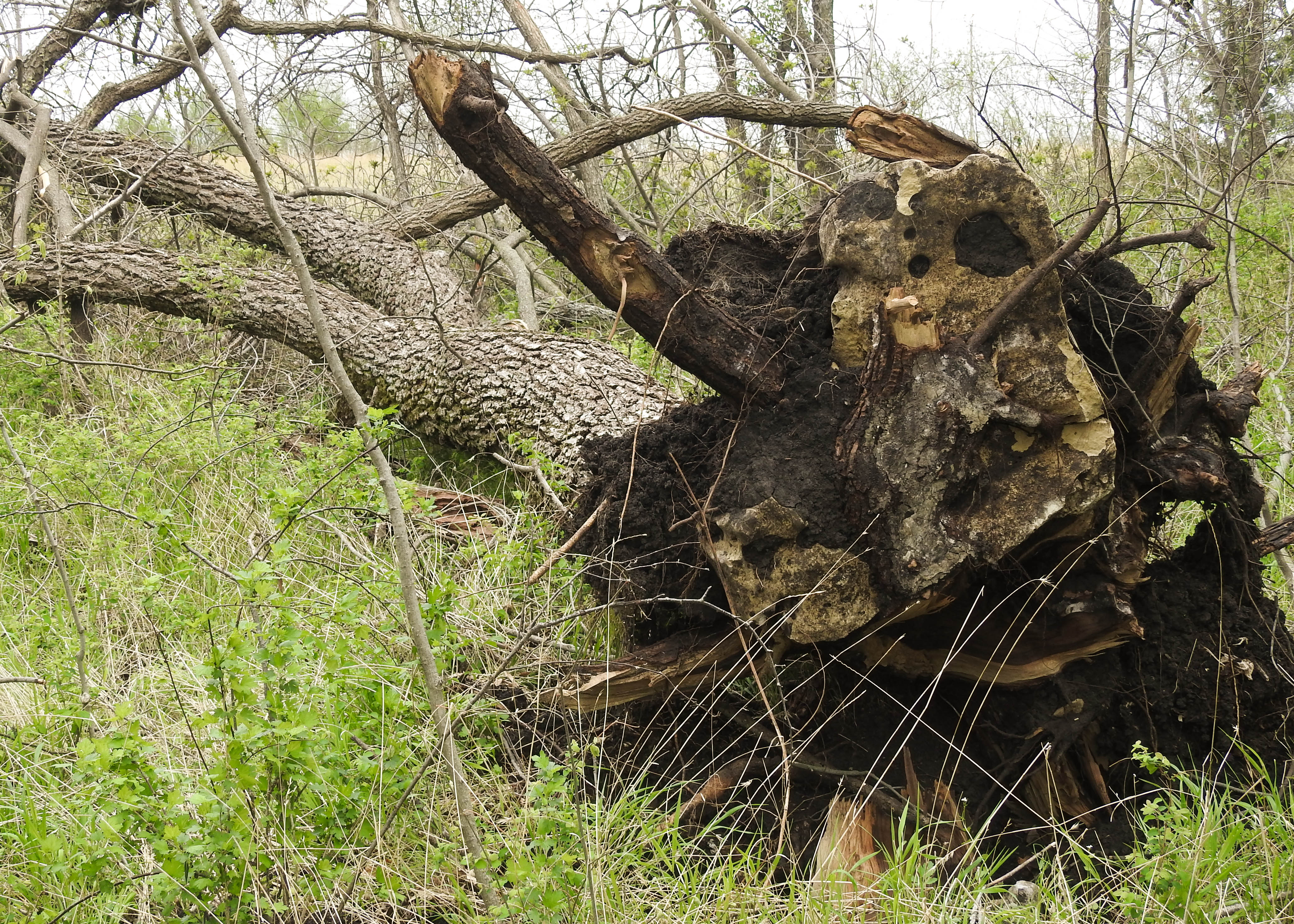A Tornado's Impact on Far West Farm
There’s no easy path to becoming a magnificent old tree, especially when a tornado is loose
The pleasure that my wife Carolyn and I get from being around large trees is not limited to the massive bur oaks and other mature trees that contribute so much to the beauty and character of Far West Farm. One of the major draws of the lot we built our home on in Manhattan is that it hosts two large bur oaks that frame the view as one looks to the south.
Of a more unusual nature is the mammoth Siberian elm that hangs over our home on the east side. Siberian elms are not one of our favorite trees. They are very brittle, which can lead to broken branches and significant damage during storms. They also have an extremely shallow root system, which makes gardening around them problematic. I am constantly trying to kill Siberian elms in our Conservation Reserve Program filter strips at Far West Farm—descendants from elms that were planted at the two homesteads Carolyn’s great-grandfather built for her grandfather and his brother when the two of them came home from tours of duty as ambulance drivers in France in World War I. Despite my prejudices against Siberian elms, the one that stands beside our house is a magnificent specimen and I am willing to put up with occasional dropped limbs—though I was not very charitable towards the tree when some years ago a broken limb plunged onto our roof and shattered some of our concrete tiles.
The chance of any one tree living for decades and achieving exceptional stature is slim. While good genetics might make a seedling a candidate for plant stardom, herbivores, competition from other trees and weeds, herbicides, farming implements, beaver, construction, and myriad other threats can snuff out the potential of any individual tree.
Weather, in the form of droughts, floods, hail, wind and ice, is also a constant threat. I was reminded of how indiscriminate nature can be in determining whether a tree lives or dies as I began cleaning up in the aftermath of the tornado that struck western Morris County on the night of April 29th.
The tornado formed just west of the farm home of Cary and MaryAnna Granzow. Cary farms our land in partnership with an associate who owned a large machine shed and farm equipment at the Granzow farm. The twister destroyed two large machine sheds, caused more than $60,000 in damage to a combine, smashed the cab of a tractor and drove one of the trusses that formed the framework of the roof of the largest shed through their living room window. Fortunately, the Grazows had gone to their basement.
After hitting the farmstead, the tornado drifted to the southeast, traveling about a mile before passing over the north edge of our 72-acre property along Clarks Creek. The tornado then veered to the northeast towards Latimer. Winds in the EF-1 tornado, which coursed over 18 miles in 22 minutes, reached nearly 100 miles per hour.
While the tornado downed numerous trees and severely damaged others, we were lucky in the sense that the cyclone’s core just brushed our property. I immediately became aware of the randomness of tornado damage when Carolyn and I arrived at the Far West Farm to see what the storm had done. The parking area, a grassy spot amid a grove of mature bur oaks along Highway 4, is a half mile south of where the center of the tornado passed. In the middle of the mowed area once stood a large bur oak with two trunks. Both were snapped off. Evidence in the earth showed that the large trunks were not bent over. Instead, one was twisted off, lifted up, and then dropped down about four feet from the tree. Then it toppled over. Amazingly, none of the other old oaks in the immediate vicinity, including a multi trunked sentinel on the edge of our forest that is one of our favorite trees, suffered notable damage.
As we made our way along the nature trail, we soon came to two large limbs across the trail as we approached Clarks Creek. A little further along, as if to illustrate the randomness of calm and disaster, we came to a place where a 20-foot limb, 40 feet in the air spans the trail. The weathered limb, which is devoid of all small branches, stretches between two trees, and after every windstorm I expect to find it lying on the trail. Its footing is so precarious that I look upward and hurry along to be sure it won’t pick that moment to crash as I pass under it. Yet, despite 90 mile per hour winds in December and then a tornado, that limb remains suspended overhead.
A little farther along we came to our first tree across the trail. A large hackberry, it had also brought down a neighboring black walnut. Young and healthy trees are just as much at risk as old trees during a disaster. We left the trail to get around the windfall and shortly after resuming our walk found a second major pile of downed limbs near a fallen tree. Next we came to a point where a massive hackberry had been uprooted—its 10-foot root ball leaving a gaping hole in the ground. More smaller trees lay under it. The tree’s top spanned the trail, which necessitated more bushwhacking.
We soon came to where we could see the first of the five sycamores on our property. As I had feared, the Great-blue Heron nest that was in the tree was gone. In fact, the entire limb more than a foot in diameter that had held the nest had been sheared off. I looked across Clarks Creek to where the largest tree on the farm, another sycamore, had hosted six Great-blue Heron nests. Two nests remained, though one looked to be in poor repair. (Due to leaf coverage I have been unable to see whether a heron is sitting on the remaining nest.)
We navigated around two more downed trees that forced us off the trail. In nearly every instance, the fallen trees had squashed others or sheared limbs from trees that were wounded but would recover. Thanks to the help of a neighbor, Justin Schrader, who has permission to bow hunt for deer on the property, I was able to open the trail and get it ready for its first mowing of the season. General tree damage along the north edge of our property was worse than along the trail, which made me realize how lucky we were. The twister took out many mature trees and caused major injury to some of our largest. I know from experience, however, that most old large trees have suffered severe limb losses and other damage over their lifetimes and yet they have grown into impressive specimens.
When you see a majestic old tree that has lived 100, or in the case of some of our trees 160 years, you are seeing an organism that has witnessed many storms, periods of challenging weather, and other threats. They persevered and we feel lucky that so many have. Their weak spots might have provided a nesting spot for a woodpecker or other cavity nester. Their hollows might have hosted raccoons or an opossum. At their tops they might have lent nesting crooks to herons or Red-tailed or Red-Shouldered Hawks. They have given character to the woods, mast to hungry animals, and shelter to other organisms. It’s painful to see one lying on the ground, but with some luck, proper care at the hands of Carolyn and me and Audubon of Kansas in the future, they and other trees will be available to compete and climb to the tallest reaches of Far West Farm.
 Oak that was snapped off at the parking lot for
Oak that was snapped off at the parking lot forthe nature trail at Far West Farm
 The 10-foot rootball of a hackberry that
The 10-foot rootball of a hackberry thatmight have been 100 years old
 Downed Walnut Tree
Downed Walnut Tree